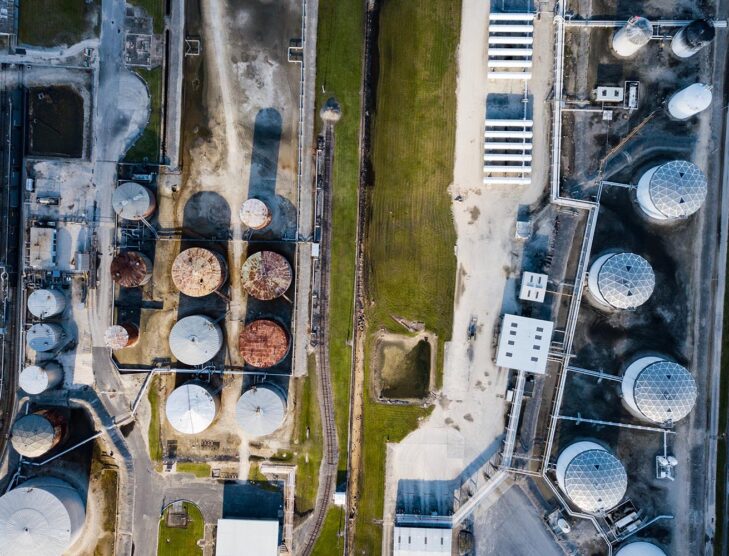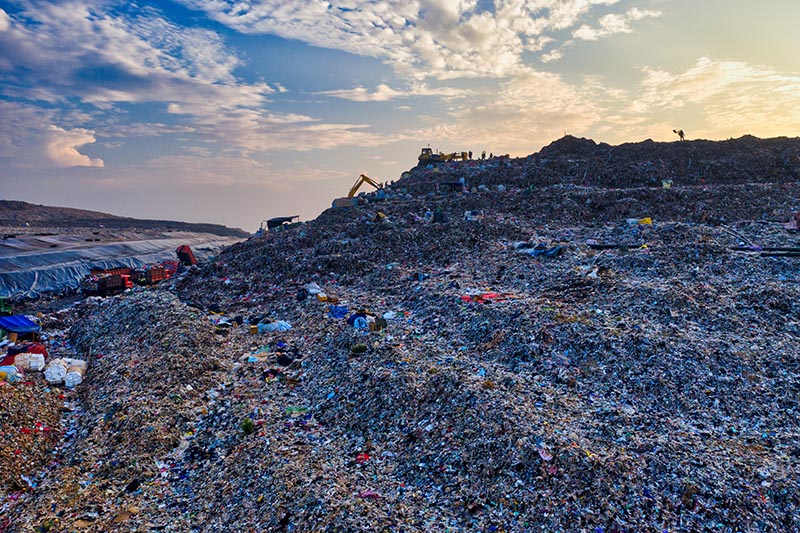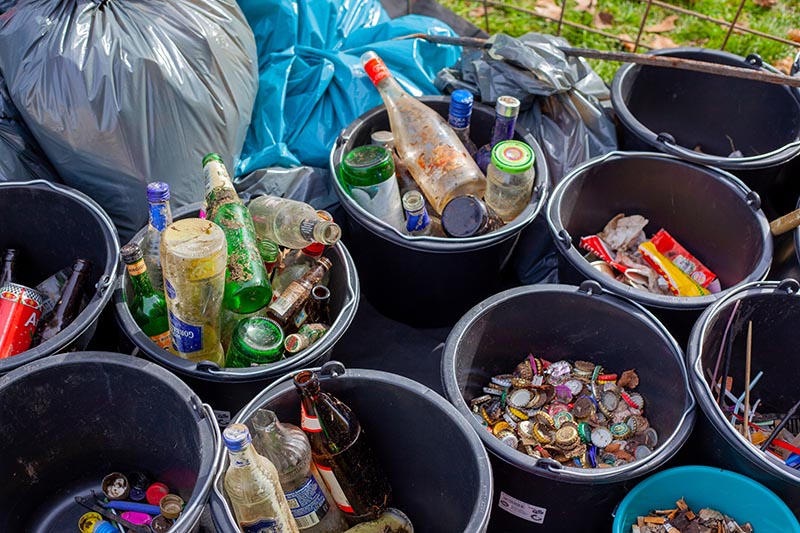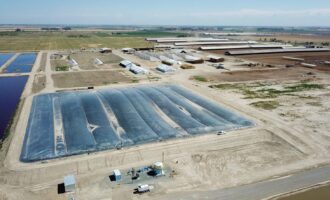
Waste streams can help refiners transition to low-carbon fuel
The Energy Institute (EI), together with Concawe, recently engaged E4tech to complete a technical analysis of waste-to-products (WTP) technologies that could be integrated into the European refining system in the 2030 and 2050 timeframe. Processing wastes in the refining supply chain would allow the continuing use of refinery assets and support the transition to low-carbon feedstocks.
Waste is a significant global issue. Every year we dump a scarcely believable 2.12 billion tons of waste. With the world’s population continuing to expand and living standards improving, this negative effect of consumerism is not going away any time soon.
Dealing with massive waste generation, its impact on the environment and the depletion of natural resources is gaining increasing attention. Governments, waste and material processors are turning to technology to transform garbage into a sustainable alternative to fossil-based resources or to provide efficient solutions to recycle materials. Companies that are focused on waste as a feedstock are emerging, enabling more value to be extracted from waste streams, a reduced ecological footprint and encouraging the transition to a sustainable circular model.

The Energy Institute (EI), based in London, UK, is an organisation for professionals in energy-related fields that focuses on real-world energy and climate solutions. Concawe is the scientific division of the European Refining Association. Its membership represents close to 100% of the refining capacity in the European Union (EU).
The two organisations recently engaged energy and sustainability strategy consultancy E4tech to complete a technical analysis of waste-to-products (WTP) technologies that could be integrated into the European refining system in the 2030 and 2050 timeframe. Processing wastes in the refining supply chain would allow the continuing use of refinery assets and support the transition to low-carbon feedstocks. Phase 1 of the three-part research effort was published in July 2022.
The first phase provides an overview of available waste streams and a detailed examination of four waste-to-fuel (WTF) refinery pathways. In the report, EI evaluates the current state of knowledge of WTF pathways and identifies key knowledge gaps.
Phase 2 will consider alternative uses of the wastes outside the refinery supply chain and the future availability of waste feedstocks amid a focus on waste minimisation and the transformation of the residual waste into valuable products. Finally, a technical publication on the economic and environmental viability of WTP pathways until 2050 will be produced in Phase 3, for use by a variety of stakeholders.
Seven waste feedstocks were considered in the study based on projected EU volumes and existing interest levels in both industry and academia. Larger waste volumes were deemed attractive, and feedstocks needed to integrate with primary conversion technologies. Phase 1 also highlighted the importance of a feedstock’s position within the waste hierarchy so that usage compares favourably to current end-of-life fates.
Of the seven feedstock options considered, mixed residual waste (MRW), non-recyclable mixed plastic waste, sewage sludge and municipal biowaste were selected for further analysis. MRW is the waste feedstock with the largest annual volumes in Europe at approximately 222 million tonnes per annum (Mt/a), the majority of which ends up in landfill. Mixed plastic waste includes plastic waste not separated and sorted for recycling at material recovery facilities. MRW and mixed plastic waste are mainly utilised lower in the waste hierarchy and were deemed suitable for further analysis. Sewage sludge is obtained from the treatment of various wastewater and was selected as some of the material is employed lower than fuels in the waste hierarchy. The large potential volume of municipal bio waste, including food and garden waste, made it an attractive feedstock for further assessment.
Researchers rejected the use of landscape care biomass, woody and grassy residues from maintenance of urban areas, due to its similarity to municipal bio waste and because of volume uncertainties. Automotive shredder residue (ASR), the residue that remains following vehicle dismantling, was omitted as a feedstock due to relatively low volumes (~3Mt/a) and vagueness over pre-treatment requirements for gasification. The final waste feedstock option, used tyres, is used for material recovery higher up the waste hierarchy and is therefore unsuitable as a fuel feedstock.
Diesel demand contributes roughly 30% of refinery output followed by gasoline (20%), jet fuel (10%), light heating oil/marine diesel (10%) and heavy fuel oils (15%). A wide range of possible conversion pathways exist. With expected declines in gasoline and heating oil moving forward, due to electrification, the researchers focussed their efforts on conversion pathways oriented to distillates (diesel and jet), although pathways to produce other fuels were also considered.
Analysis in the report is based on a more narrowly defined set of four pathways and the authors noted that the focus is on WTF upgrading at the refinery to identify synergies and barriers associated with utilising existing refining infrastructure.
Gasification and Fischer-Tropsch (FT) synthesis were established as the most suitable primary conversion technology for MRW, resulting in the production of FT wax for use in refining. MRW is not separated for reuse, recycling or composting and gasification is less sensitive to contaminants in the waste stream than other technologies. The report noted that this pathway is currently being developed by several low-carbon fuel producers.

EI identified pyrolysis as the most appropriate conversion technology for mixed plastic waste, creating pyrolysis oil as its primary product. The report highlighted a growing interest in the technology with the development of demonstration plants using pyrolysis technology underway by low-carbon fuel and chemical recycling developers. However, mixed plastic waste volumes are relatively small, at 10 Mt/a, with landfill comprising 37% and the remainder sent to energy from waste plants (EfW).
Sewage sludge is primarily used in land application for agriculture or ecological improvement. The research recognised hydrothermal liquefaction (HTL) as a potential pathway for the conversion of sewage sludge to HTL oil. HTL was selected due to its ability to handle feedstocks with large amounts of moisture. Current sewage sludge waste availability is 11 Mt/a.
Municipal biowaste conversion is via anaerobic digestion (AD) to biogas, steam reforming and FT synthesis. The feedstock has already been proven suitable for AD, which can handle the large amounts of moisture in the waste. The report highlights its potential use as a fuel in hard-to-decarbonise sectors such as aviation and recommends further research in this area.
Despite the identification and selection of several feedstocks and conversion pathways for the creation of fuels, the researchers emphasised the unfavourable position of fuels in the waste hierarchy relative to mechanical and chemical recycling—which they believe could impact feedstock availability. Further examination of this factor will be completed in Phase 2, however, not all wastes can be recycled, creating opportunities for the use of non-recyclable components in alternative fuels. The study also observed an opportunity for greenhouse gas reductions by diverting certain non-recyclable waste feedstocks away from EfW plants to WTF pathways when compared to the current end-of-life fates.
Refineries in the EU typically receive 20 to 50 kilotons of crude oil per day. The research highlighted concerns around the scale of WTF production compared to conventional refining and cited the need for complementary feedstocks, such as e-fuels, or technology, such as carbon capture and storage, to achieve net zero emissions on a well-to-wheel basis.
EI also warned of product quality risks. Sourcing from a single waste supplier may require only minor capital expenditures (CAPEX) and offer some latitude in terms of product quality. However, a scaled-up facility sourcing from multiple waste suppliers will require far greater investment and significant quality considerations. A high degree of uncertainty exists if intermediate products are processed at high levels—particularly for the sewage sludge and waste plastic pyrolysis pathways.
Some of the pathways identified are well understood and are approaching technology maturity, particularly those that produce FT wax. Further research is required for the pathways that produce pyrolysis or HTL-derived oil. The report indicates that the technological maturity of the individual processes is higher than the integrated pathway.
Waste plastics pyrolysis is the only pathway where primary conversion and fuel use are commercial today, although, at only a handful of plants and most likely at low blends. MRW and municipal biowaste AD are commercial for power but not for fuel synthesis. Sewage sludge/HTL is currently only at pilot scale.







